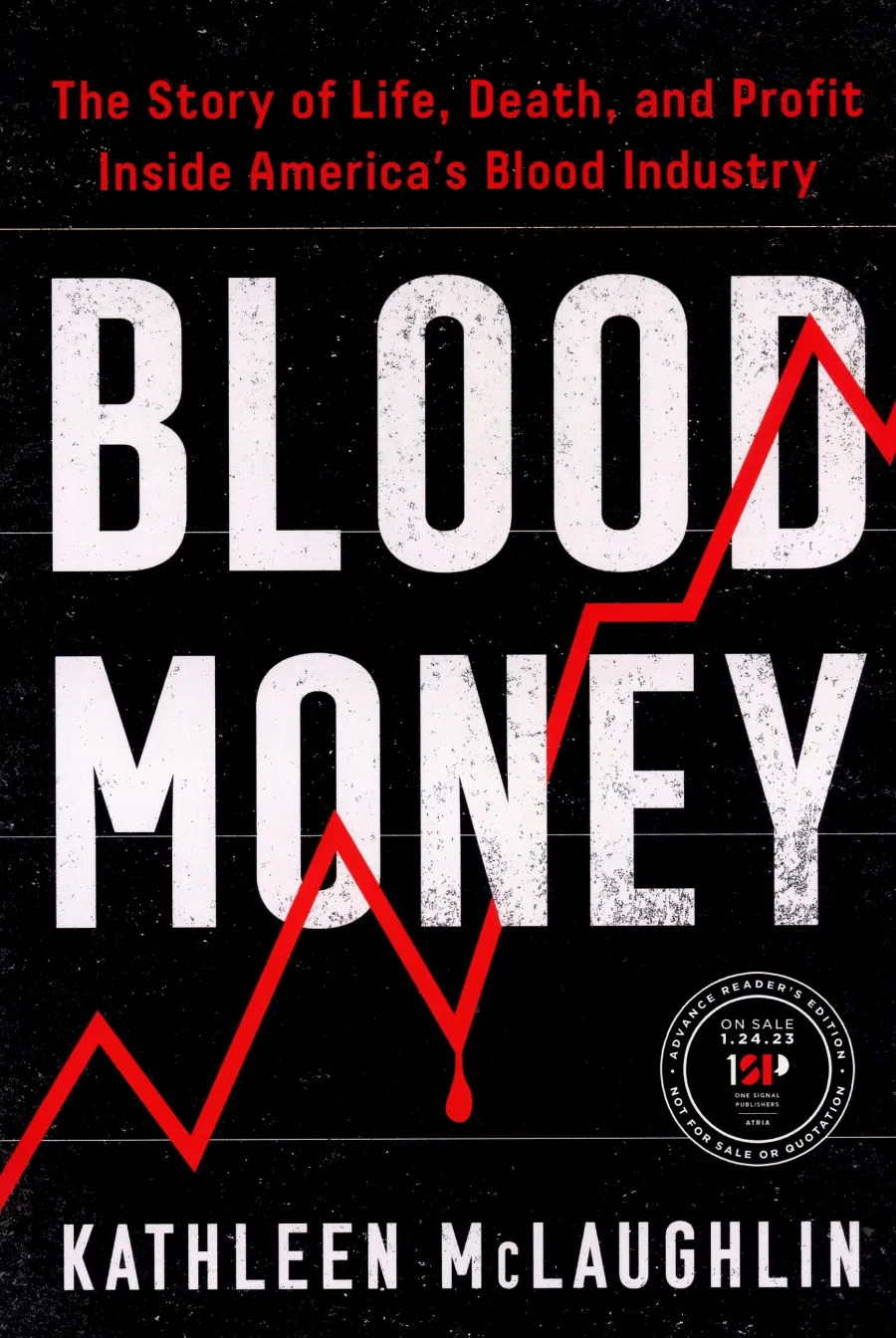Working class vampire predator - the for-profit blood industry

Every morning at my Laborers’ union hall construction workers gather for job dispatch. About 20 years ago I noticed Sally (not her real name) looked haggard. I asked how she was doing. “I’m okay, I just sold blood and I’m feeling tired.”
Cruise any city on the working class side of the tracks, and there’s a good chance you’ll find a plasma center, where people get poked and paid to share their body’s vital fluid. For too many, it means groceries, rent or a student’s college textbooks.
The U.S.A. is a rare nation – this country allows people to sell blood for money. It is forbidden in most countries except for the U.S., Germany, Austria, the Czech Republic and Hungary – the world depends for two-thirds of its plasma supply from within U.S. borders, a profitable but unseen enterprise.
Kathleen McLaughlin, Blood Money’s author, lives on the receiving side, she has a rare disease, chronic inflammatory demyelinating polyneuropathy (CIDP), which means she requires a plasma transfusion every few months. Her curiosity was first sparked while reporting in China. China had ceased importing blood in 1985 during the AIDS epidemic. To supplement the nation’s supply, rural farmers in Hunan became the new, paid donors, stuck two to three times weekly for eight dollars. Despite the government restrictions, AIDS was present. Rural peasants began falling to the disease and roughly one million Chinese were infected. To protect herself, McLaughlin smuggled plasma into China for her own needs. Where did that plasma come from? This sent her on a cross-country American journey, visiting plasma extraction centers and trying to learn who the donors were.
The donors were not homeless nor notoriously poor. They were working people subsisting on minimum wage, part-time employment, a high percentage people of color. College students were selling plasma to buy for textbooks. Mexican nationals crossed the border multiple times a week, making more than Mexico’s minimum $12.50 daily wage. She plotted where the plasma centers were – not anywhere with high economic standards, always in struggling border, Rust Belt and Southern communities. She cites an Oxfam America 2022 study that showed one-third of American workers earn $31,000 annually, $15 dollars an hour for a 40-hour week. These were the donor target population, needing extra cash for a car repair or groceries. There were fewer than 300 paying plasma centers in 2005, over 1,000 by 2021. Simply watch where working Americans shop and eat and there’s a good chance there’s a stick shop nearby. When President Donald Trump closed the Mexican border there was panic in the U.S. plasma industry, five to ten percent of its plasma came from 52 border blood centers.
At blood drives willing donors share their life fluid, bolstering medical needs. For those who depend upon paid donation, she asks if plasma donation should be considered work, with an established minimum per donation? In the 1930s before blood storage was perfected, hospitals needed donors for immediate transfusion. New York city donors organized an American Federation of Labor (AFL) Blood Givers’ Union, demanding a consistent payment system. Once blood storage was possible, this faded, but she sees a future possibility here in organizing.
Impoverished Flint, Michigan was once the United Auto Workers’ bulwark, a city where industrial unionism was born in the 1936-37 General Motors sit-down strike. In Flint she found a weed grown field with a sculptural salute to these union pioneers who fought their way into the middle class. Across the street is a plasma center, where today’s working class finds their survival income.
Human blood is vital, vampire stories mark our cultural dark corners. A vampire international trade industry is literally sucking people’s blood for a few dollars more. Plasma centers lure donors like a casino, promising bonuses with frequent donations. Donors experience fatigue yet no one is studying the long-term health consequences of weekly or even more frequent extractions.
McLaughlin writes, “The fundamental problem with the plasma business lies not in the practices of drawing people’s plasma but in the flaws inherent in American capitalism. We have begun to accept that people should do whatever it takes to get by – as the rich get richer, it’s fine for teachers and truck drivers to sell their blood to make ends meet.”
Donating blood is an exemplary assist to unseen medical needs. For-profit extraction preys on those struggling to just make ends meet. This unseen industry deserves the spotlight, one McLaughlin turns on it in not just clinical terms, but from her own medical needs and working people’s perspective who use their blood to survive another day.
Blood Money: The story of Life, Death & Profit Inside America’s Blood Industry
By Kathleen McLaughlin
One Signal Publisher, 2023
Review by Mike Matejka